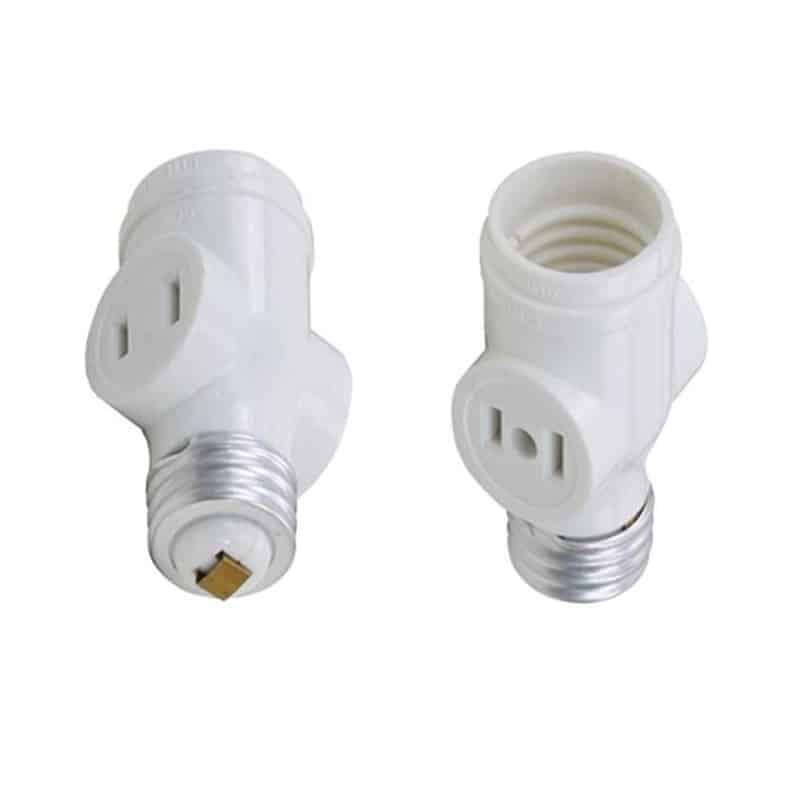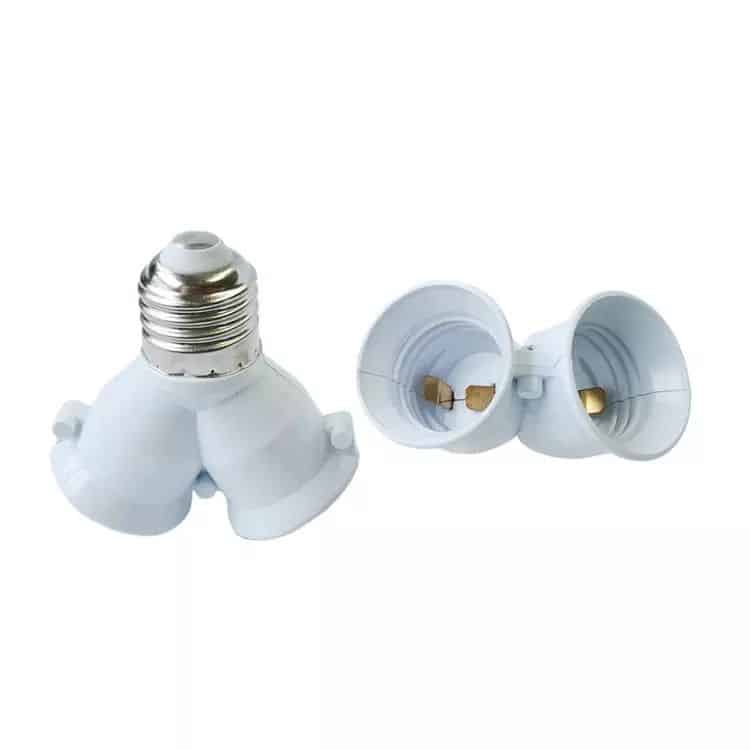Bulb base converters are a convenient solution for adapting different types of light bulbs to incompatible fixtures. However, while they offer flexibility, there are potential risks and disadvantages that many users may not consider. Understanding these drawbacks can help you make safer and more informed choices.

What Are Bulb Base Converters?
Bulb base converters are small devices designed to adapt one type of bulb base to fit into a socket of a different type. For instance, they can convert an E27 medium screw base to an E14 small screw base or adapt a bayonet B22 base to an Edison screw E26. They are commonly used in residential, commercial, and industrial lighting applications to provide flexibility when the available bulb doesn’t match the existing socket. By using a converter, users can avoid the need to replace fixtures or purchase entirely new bulbs.
Advantages of Using Bulb Base Converters
The main advantage of bulb base converters is the flexibility they provide. They allow users to reuse bulbs in different fixtures, which can save money and reduce waste. For instance, if you have an expensive LED bulb with an E27 base but only have fixtures with E14 sockets, a converter enables you to continue using the bulb. Converters also promote environmental sustainability by extending the lifespan of bulbs and fixtures, reducing unnecessary disposal.
Disadvantages of Using Bulb Base Converters
While bulb base converters are practical, they come with several disadvantages that could outweigh their benefits in certain situations. One of the most significant concerns is safety. Using a converter can lead to overheating if the wattage of the bulb exceeds the capacity of the fixture. For example, a high-wattage halogen bulb used with a converter may generate excessive heat, creating a fire hazard. Additionally, poorly made converters or loose connections can further increase the risk of fire or electrical shocks.
Another issue is aesthetic and structural compatibility. Bulb base converters often add height to the bulb, causing it to protrude from the fixture awkwardly. This can disrupt the appearance of a lighting design, especially in fixtures with a sleek or minimalist style. Furthermore, the additional weight of the converter and bulb can put stress on the fixture, potentially leading to damage or premature wear, especially with fragile or older sockets.
Electrical compatibility is another challenge. A bulb’s voltage and wattage requirements may not align with the capacity of the socket, even with a converter. This can shorten the lifespan of the bulb or compromise its performance. For example, an LED bulb designed for 240V may not work properly in a 120V fixture, even if a converter allows it to fit. Additionally, the direction or distribution of light can be affected, reducing overall lighting efficiency.

When Should You Avoid Using Converters?
There are specific scenarios where using a bulb base converter should be avoided. For instance, high-wattage or heat-generating bulbs like halogens should not be used with converters, as they can overheat and damage the fixture. Similarly, enclosed or poorly ventilated fixtures can exacerbate heat buildup, increasing safety risks. If aesthetics and precise light distribution are important, such as in decorative fixtures, converters may not be suitable as they can cause the bulb to misalign or protrude.
How to Minimize Risks When Using Bulb Base Converters
If you decide to use a bulb base converter, there are steps you can take to minimize risks. Always check the voltage and wattage compatibility of the bulb, converter, and fixture. Ensure that the converter is made from certified, high-quality materials with proper insulation and heat resistance. Look for products with certifications like CE or UL, which indicate adherence to safety standards. Regularly inspect the converter and bulb for signs of wear, overheating, or damage, and replace them if necessary.
Alternatives to Bulb Base Converters
For situations where converters pose too many risks, there are alternative solutions. One option is to replace the fixture with one that matches the desired bulb type. While this may involve an upfront cost, it eliminates the potential safety and performance issues associated with converters. Another option is to purchase bulbs compatible with the existing socket, especially with the wide variety of LED options available today. If flexibility is essential, consider custom fixtures that can accommodate multiple bulb types.

Conclusion
Bulb base converters are a versatile and cost-effective solution for adapting bulbs to different sockets, but they are not without their drawbacks. Safety concerns, structural issues, and potential compatibility problems should all be considered before using a converter. By carefully weighing the risks and benefits, and by taking steps to minimize hazards, you can make informed decisions that meet your lighting needs effectively and safely.
FAQs
Can using a bulb base converter void the fixture’s warranty? Yes, in some cases, using a converter may void the warranty, especially if it leads to overheating or other damage.
Are certain bulb types safer to use with converters than others? LED bulbs are generally safer because they generate less heat, but compatibility with the fixture’s voltage and wattage limits is still crucial.
What certifications should I look for when buying a converter? Look for certifications like CE, UL, or RoHS, which indicate that the converter meets safety and quality standards.













